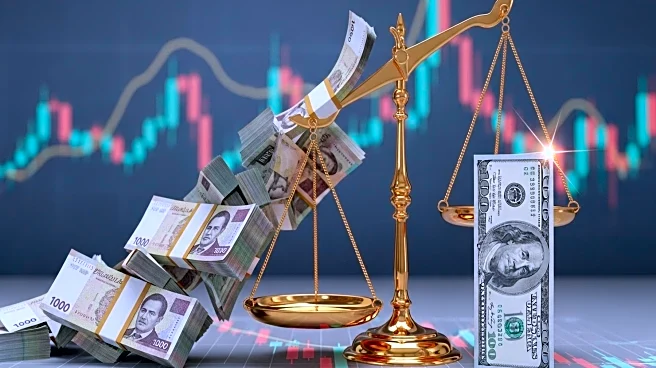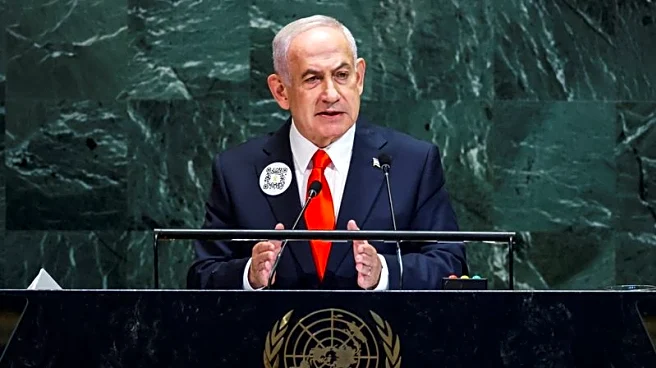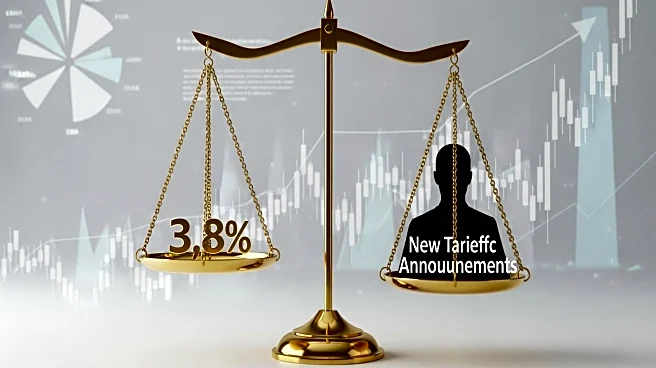What is the story about?
What's Happening?
Iran's currency, the rial, has reached historic lows, trading at approximately 1,080,000 to 1,130,000 per US dollar on the open market. This decline is attributed to U.S. and UN sanctions, which have severely impacted Iran's oil revenues and banking sector. The Central Bank of Iran has attempted to manage the situation through auctions and policy tools, but the rial continues to weaken. Ordinary Iranians are turning to licensed moneychangers and cryptocurrencies to exchange currency, as formal banking channels are nearly impossible due to sanctions.
Why It's Important?
The plummeting value of the rial highlights the severe economic impact of international sanctions on Iran. The reliance on black market exchanges and cryptocurrencies reflects the challenges faced by ordinary Iranians in accessing foreign currency. The situation underscores the broader implications of sanctions on Iran's economy, including inflation, social strain, and limited access to essential goods. The ongoing currency crisis could lead to further economic instability and exacerbate existing social and political tensions within the country.
Beyond the Headlines
The dual exchange system in Iran, with multiple rates for different purposes, creates opportunities for corruption and market distortion. The reliance on informal networks and cryptocurrencies for currency exchange highlights the adaptability of Iranians in navigating economic challenges. The situation in Iran is comparable to other countries with tight FX controls, such as Venezuela and Argentina, where parallel markets thrive due to strict currency regulations. The long-term resolution of Iran's currency crisis will require significant policy reforms and potential easing of sanctions.
AI Generated Content
Do you find this article useful?














